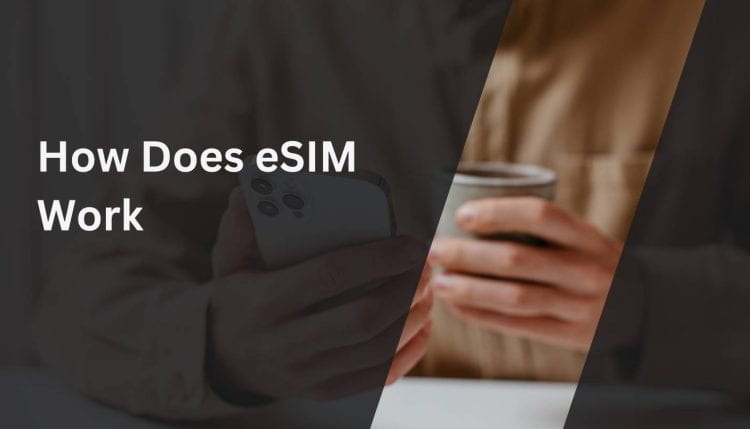
How Does eSIM Work? The Beginner’s Guide to Embedded SIM Technology
It’s no secret that eSIMs are changing the way we connect our devices. But how does eSIM work, exactly? In this beginner’s guide, I’ll break down everything you need to know about eSIM technology, including how it differs from traditional SIM cards and why it’s becoming the new standard.
What Is an eSIM?
First, let’s cover the basics. An eSIM, short for “embedded SIM,” is a chip that’s built directly into your phone or device. Unlike a physical SIM card that you have to swap out, an eSIM is reprogrammable, allowing you to change your carrier or data plan without having to get a new card.
Think of an eSIM as a digital SIM that lets you connect to cellular networks without the need for a removable card. It’s all done through software.
How Does eSIM Work?

So, how does eSIM work under the hood? The key is that eSIM technology stores multiple carrier profiles directly on the device. When you want to switch plans or carriers, you can do so by downloading a new profile, which only takes a few taps.
Here’s a quick step-by-step of how it works:
- Your eSIM-compatible device has a chip with an eSIM profile pre-installed
- You decide to switch carriers or add an additional cellular plan
- Using your phone settings, you download the new carrier profile to your eSIM
- Your device is now connected to the new carrier network – no physical card required
It’s really that simple. No more fussing with tiny SIM cards or having to wait for a new one to arrive in the mail. With eSIM, the process is seamless.
eSIM vs. Physical SIM: What’s the Difference?
Now that you know how eSIM works, let’s compare it to traditional physical SIM cards. The main difference lies in the fact that eSIMs are embedded and reprogrammable, while physical SIMs are removable cards provided by carriers.
Some key differences:
- eSIMs are reprogrammable, physical SIMs are not
- eSIMs support multiple carrier profiles, physical SIMs are locked to one carrier
- eSIMs can’t be lost or stolen like physical SIM cards can
- eSIMs free up internal space for other phone components
- eSIMs allow devices to be thinner since no SIM card slot is required
While physical SIMs remain an option for now, the industry is moving towards eSIMs as the future standard for connecting phones and cellular-enabled devices.
How Does eSIM Work on iPhone?
One of the most common questions I get is: how does eSIM work on iPhone models specifically? The good news is that Apple has supported eSIM technology since the iPhone XS/XR.
To use an eSIM on your iPhone, you first need to make sure your carrier supports it. From there, you can go to Settings > Cellular > Add Cellular Plan to download an eSIM profile. Your iPhone will walk you through a few quick steps and voila – you’ll be connected via eSIM.
The beauty of using an eSIM on your iPhone is that you can have multiple plans active and easily switch between them as needed. So you could have your primary carrier assigned to your physical SIM card slot and use the eSIM for a temporary travel plan or for a secondary line.
The Benefits of eSIM Technology
So why should you care about eSIM? Because it makes it easier than ever to stay connected while offering some great benefits:
- Instant connectivity – download a profile anytime without having to wait for a SIM card
- Access to local data plans when traveling to avoid roaming fees
- Ability to have multiple carrier plans on one device
- Environmentally friendly since there’s no plastic SIM cards to dispose of
- Added security since eSIMs can’t be stolen like physical SIMs can
Whether you’re a frequent traveler, someone who juggles work and personal lines, or you just want a more seamless way to connect your devices, eSIM is a game-changer.
The Bottom Line on How eSIM Works
So there you have it – a complete breakdown of how eSIM works and why it’s worth considering as your next way to connect. While the technology may seem confusing at first, it’s actually a very straightforward and user-friendly way to access cellular networks.
As more phones start to support eSIM in 2024 and beyond, I expect we’ll see a rapid shift from physical SIMs to reprogrammable eSIMs. And now that you know how eSIM works, you’re ready to take advantage of it.